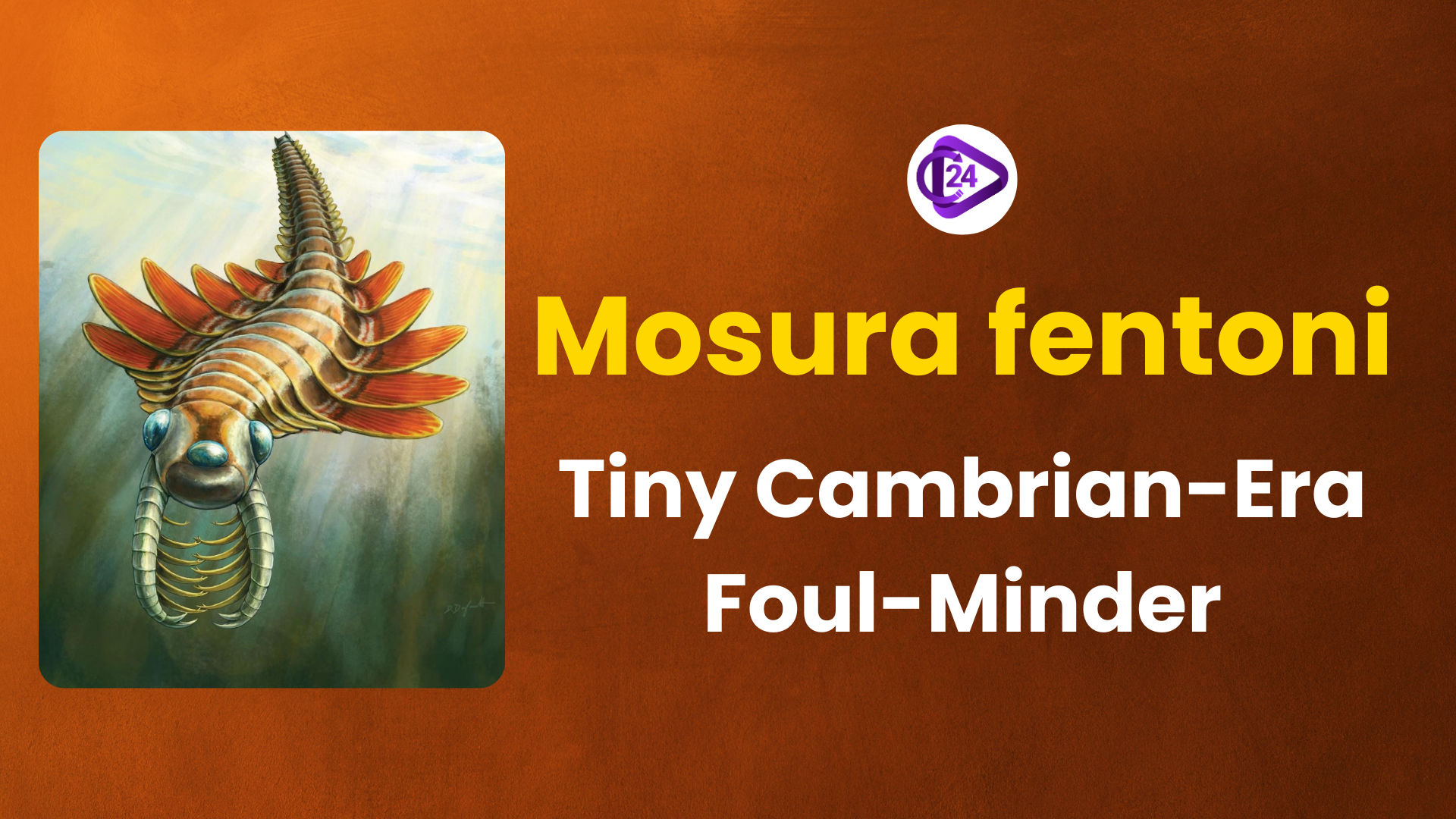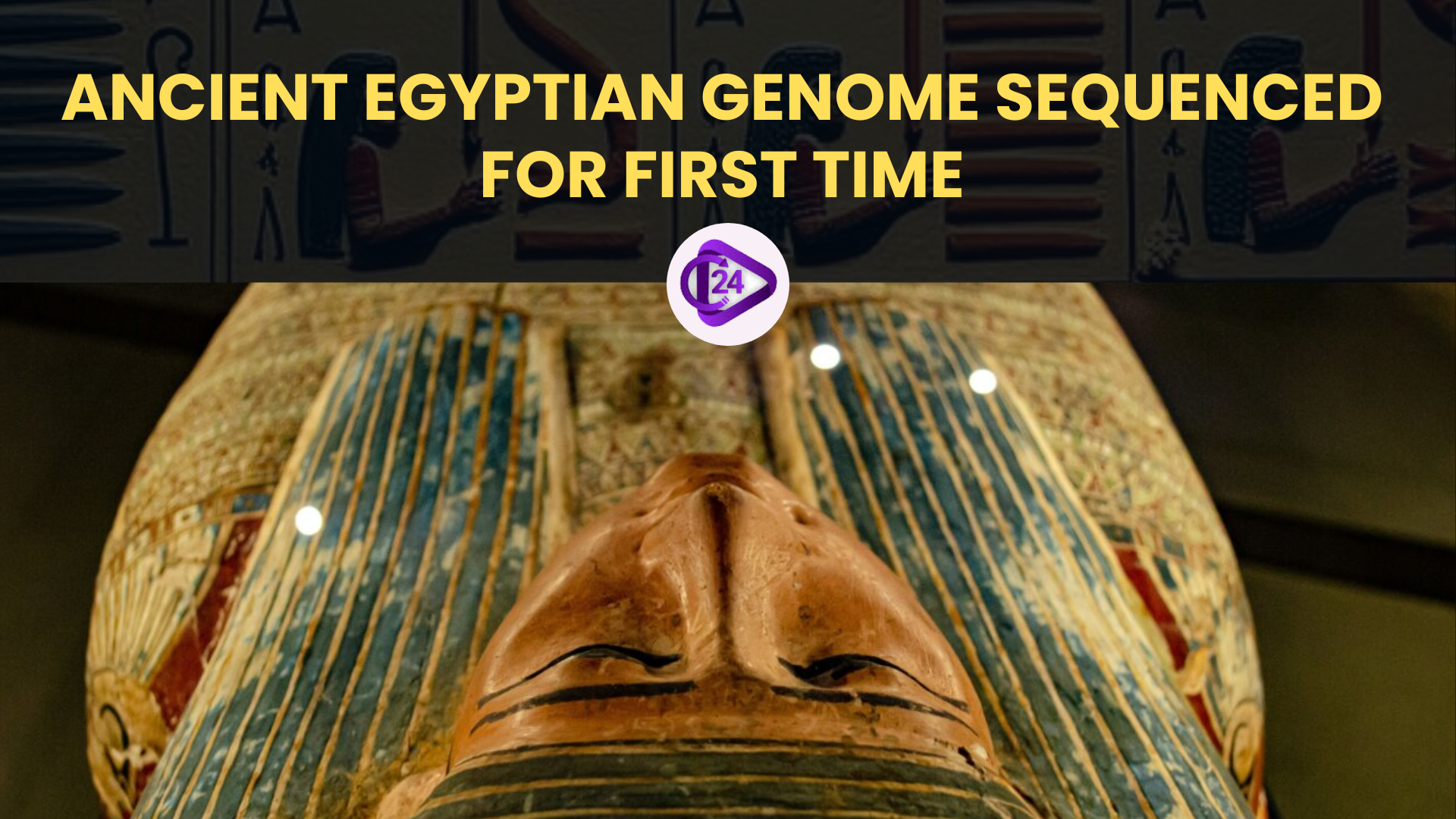
Scientists found Mosura fentoni, a newly discovered sea creature from the Burgess Shale of Canada, which challenges the current thinking about Radiodonts—a group that has much in common with modern insects, crabs, and spiders. Because it did not measure more than 6 cm, M. fentoni was quite small. Yet, it had a long, sectioned body and included several evolved features that suggest complex experimentation took place in the early days of arthropod life.
Context:
-
Mosura fentoni is a small Cambrian animal from the radiodont group.
-
Its structure and breathing system show that early arthropods found ways to specialize body segments.
-
This discovery gives important insight into the origins of arthropods’ wide range of forms.
Key Points
-
Species Overview:
-
Mosura fentoni was a tiny Cambrian animal in the radiodont group, related to modern insects and crabs.
-
-
Body Structure:
-
Its slender body (1.5-6 cm) consists of 26 parts divided into three parts, the neck, a swimming part with six paddles and a tail with up to 16 gill slits.
-
-
Specific Ways of Breathing:
-
The gills that cover most of the posterior part of the body make the posterotrunk a special air-breathing tagma, as seen in the gills of horseshoe crabs.
-
-
Evolutionary Significance:
-
This places M. fentoni at the bottom of the radiodont family, which implies that early radiodonts had begun to adopt complex body organization and the kind of specializations that later showed up more clearly in arthropods.
-
-
Suggestions for Arthropod Diversity.
-
It is possible that the splitting of segments and jobs in ancient arthropods created the conditions for the great variety in types and shapes found in modern arthropods.
-
Conclusion:
The study of Mosura fentoni gives us vital information about the first phase of arthropod evolution, showing how ancient marine life explored ideas for advanced body functions. The discovery contributes to our understanding of how arthropod diversity came about and shaped many modern animal groups.



 India’s Hydrogen-Powered Train: A Milestone in Green Transportation
India’s Hydrogen-Powered Train: A Milestone in Green Transportation NISAR: First NASA-ISRO Joint Earth Observation Satellite to Launch on July 30
NISAR: First NASA-ISRO Joint Earth Observation Satellite to Launch on July 30 Shubhanshu Shukla landed safely back to Earth after an 18-day Axiom Mission 4
Shubhanshu Shukla landed safely back to Earth after an 18-day Axiom Mission 4 Google Unveils AI Innovations to Make Agri Practices More Data-Driven, Efficient
Google Unveils AI Innovations to Make Agri Practices More Data-Driven, Efficient First Ancient Egyptian Genome Sequenced: 4,500-Year-Old DNA Offers Clues to Ancestry and Preservatio
First Ancient Egyptian Genome Sequenced: 4,500-Year-Old DNA Offers Clues to Ancestry and Preservatio Amaravati to Host Operational Quantum Computing Centre by January 1, 2026, Announces Naidu
Amaravati to Host Operational Quantum Computing Centre by January 1, 2026, Announces Naidu Amaravati to Host India’s First Quantum Computing Valley
Amaravati to Host India’s First Quantum Computing Valley India Returns to Space: Shubhanshu Shukla Aboards ISS After 41 Years
India Returns to Space: Shubhanshu Shukla Aboards ISS After 41 Years India Named Rinderpest Holding Facility by Global Health Body
India Named Rinderpest Holding Facility by Global Health Body Andhra Pradesh Partners with NVIDIA to Establish India’s First AI University
Andhra Pradesh Partners with NVIDIA to Establish India’s First AI University






